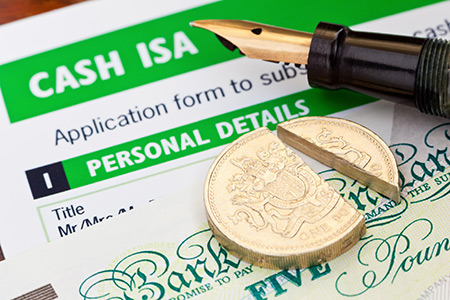There are several different types of ISA, but the most well known is the cash ISA, offered by banks. Similar to a regular savings account, a cash ISA lets you store cash in a tax-efficient wrapper where you can earn tax-free interest. This sounds good in principle, but over the long term they are rarely worthwhile, due to low interest rates which tend not to beat inflation. Many investors would be better off using their annual ISA allowance on assets which offer more promising returns (e.g. equity funds in a stocks and shares ISA). Below, our financial planning team at Vesta Wealth explains why cash ISAs leave so much to be desired and how to use your ISAs more strategically.
The shortcomings of cash ISAs
The basic idea of a cash ISA is that you can put up to £20,000 into it each tax year. Any interest you generate inside it will be tax-free. In theory, therefore, this could allow you to build up a sizable tax-free ISA portfolio over time e.g. £200,000 over 10 years – setting aside any investment or savings growth.
However, tax-free interest is not as good as it sounds in 2022. First of all, you do not necessarily need to put cash in an ISA to avoid tax on your interest. Under your Personal Savings Allowance, you can earn up to £1,000 interest each tax year, tax-free, as a Basic Rate taxpayer (or, up to £500 for those on the Higher Rate). Secondly, current interest rates remain near historic lows despite recent base rate increases by the Bank of England.
This means that you need to hold £10,000s in cash before your interest starts to get close to these £1,000 and £500 thresholds. It is rarely worthwhile holding so much in cash because the interest you are earning will be significantly lower than the rate of inflation (currently 6.2%). This means that cash is likely to lose value, in real terms, over time and so it is best to consider investing in other assets which have a better chance of matching or beating inflation.
Cash ISAs do not tend to offer better interest rates compared to normal savings accounts offered by high street banks, although Junior ISAs can offer some better deals (for those under 18).
A better use for ISAs
You can put up to £20,000 into your ISAs each tax year, but if you choose a cash ISA this is likely to be largely wasted over the long term. Instead, it is better to consider other ISA types such as a stocks and shares ISA, which allows you to invest in company shares and bonds. Funds within such an ISA involve higher investment risk but provide the possibility of generating higher returns compared to cash.
Moreover, any profits or dividends you generate within your ISA will be free from tax.
Another great option for first-time buyers is the Lifetime ISA. This lets you save up to £4,000 inside a tax-free wrapper towards a first home, and the UK government will also top up your contributions by 25% (up to £1,000). This can really help to speed up progress towards buying a property – especially if two young people in a couple maximise their own Lifetime ISAs every year i.e. representing a combined £2,000 top up every April.
Also, Lifetime ISAs can be useful for retirement planning as funds can also be used for retirement after age 60. For those who are near their Lifetime Allowance for their pension, for instance, a Lifetime ISA can open up another tax-efficient means to save towards “life after work”. Just bear in mind that you can only contribute into a Lifetime ISA until you are 50, and the government will stop adding the 25% bonus to your savings after this point.
Other important notes on ISAs
It is a good idea to consider the long-term financial planning implications of using an ISA, as well as the immediate tax benefits. In particular, most ISAs are not exempt from inheritance tax (IHT) when you die. Rather, they are typically counted as part of your estate and so may be subject to a 40% tax charge. For this reason, it can be a good idea to consider focusing on using income/capital from ISAs earlier in your retirement to support your lifestyle – rather than your pension pots (which are exempt from IHT when you die).
If you currently hold a lot of money in a cash ISA and you want to move it (e.g. into a stocks & shares ISA), then be careful not to take all of the money out. Instead, you need to fill out relevant paperwork to transfer your account to another ISA with a different provider. This will allow you to retain the “tax wrapper” around the value of your money. Bear in mind that it can take 15 days or even longer for the different ISA providers to talk to each other and process the transfer. Moving money from your cash ISA to a stocks & shares ISA does not count towards your £20,000 annual ISA allowance (which usually just concerns deposits) provided it follows the correct transfer process.
Invitation
If you would like to discuss your investments and retirement strategy, then we would love to hear from you. Get in touch with your Financial Planner here at Vesta Wealth in Cumbria, Teesside and across the North of England.
Reach us via:
t: 01228 210 137
e: [email protected]
This content is for information purposes only. It should not be taken as financial or investment advice. To receive personalised, regulated financial advice regarding your affairs please consult your Financial Planner here at Vesta Wealth in Cumbria, Teesside and across the North of England.

